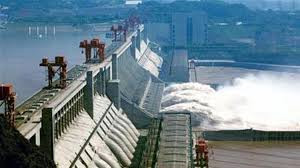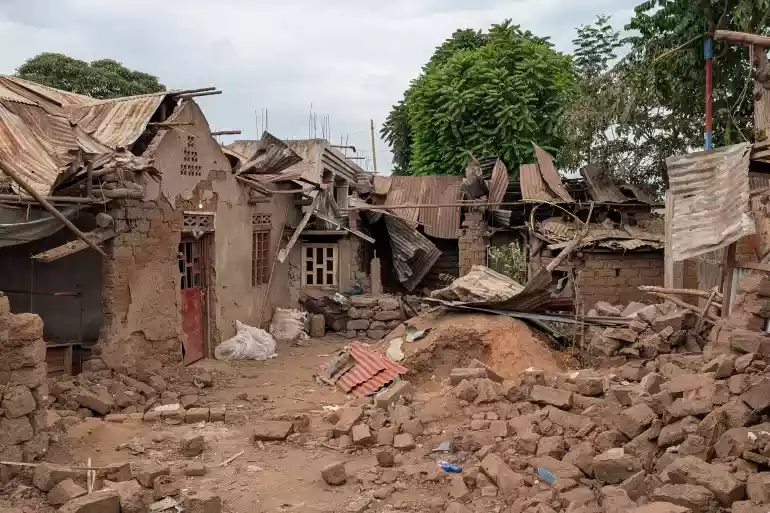
China’s controversial plan to construct the world’s largest dam on the Brahmaputra River in Tibet has intensified tensions with India, raising fears of a potential water crisis for millions downstream. The ambitious $137 billion project, located in the ecologically fragile Himalayan region, has drawn sharp criticism from experts, environmentalists, and political groups on both sides of the border.
While Beijing insists the dam is solely for energy generation, Indian officials, activists, and Tibetan movements argue it poses a threat not only to regional water security but also to ecological stability and human rights.
The Brahmaputra River, known as Yarlung Tsangpo in Tibet, originates in China before flowing into India’s northeastern states and eventually Bangladesh. It serves as a crucial lifeline for agriculture, drinking water, and hydropower generation in the region.
China plans to build the dam at the “Great Bend,” where the river makes a dramatic U-turn before entering India’s Arunachal Pradesh. The location, marked by tectonic instability, amplifies concerns about potential environmental disasters.
Beijing maintains that the project will primarily address its domestic energy needs, contributing significantly to its renewable energy goals. Officials claim that the dam will not significantly alter water flow to downstream countries.
However, such assurances have done little to alleviate fears in India. Analysts warn that a project of this magnitude could give China leverage over a vital water source, exacerbating existing geopolitical tensions.
Indian policymakers and environmental experts are deeply skeptical of China’s intentions. They worry that the dam could disrupt the Brahmaputra’s flow, triggering water shortages that would devastate agriculture, impact power generation, and jeopardize livelihoods in northeastern states.
“This isn’t just about water; it’s about control,” said a senior Indian official on condition of anonymity. “China’s actions could be weaponizing a resource that sustains millions in India and Bangladesh.”
- The brains behind Matavire’s immortalisation
- Addressing unfair trade key to transforming African food systems
- Urgent economic structural transformation necessary
- Red Cross work remembered
Keep Reading
India has raised its objections at multiple diplomatic levels, calling for transparency and adherence to international water-sharing norms.
Tibetan advocacy groups and exile communities have joined the chorus of criticism against China’s mega-dam project. They argue that it reflects Beijing’s broader strategy of exploiting Tibet’s natural resources without regard for its environmental or cultural impact.
“Tibet’s rivers are not just water sources; they are sacred lifelines for the Tibetan people,” said a representative of the Central Tibetan Administration (CTA). “China’s relentless exploitation of these resources shows complete disregard for the region’s ecological balance and the rights of its indigenous population.”
The Tibetan government-in-exile has also voiced concerns about the dam’s seismic risks, given the Himalayan region’s vulnerability to earthquakes.
India-Tibet advocacy groups see the dam as another example of China’s oppressive policies in Tibet and are urging New Delhi to take a stronger stance. They argue that supporting Tibetan autonomy could help counter Beijing’s strategic dominance in the region.
“We cannot separate Tibet’s freedom from India’s water security,” said a member of the India Tibet Friendship Society (ITFS). “China’s actions on the Brahmaputra are a stark reminder of why Tibet’s independence matters to India and the world.”
What’s at Stake?
The implications of the dam could be catastrophic for India:
Agriculture: A reduction in water flow could devastate irrigation-dependent farming communities.
Energy: Hydropower projects in India’s northeast may face shortages, worsening the nation’s energy crisis.
Human Impact: Millions of livelihoods tied to the Brahmaputra could face dire consequences.
For Tibet, the dam symbolizes the broader environmental and cultural costs of Chinese control over the plateau’s resources.
The escalating dispute underscores the urgent need for a transparent and cooperative approach to water management. Experts are calling for robust international frameworks to address transboundary water conflicts.
“This is not just an India-China issue—it’s a South Asian crisis in the making,” said an environmental policy analyst. “If these nations fail to work together, the Brahmaputra could become a flashpoint for conflict.”
As India and China navigate this contentious issue, the stakes could not be higher. With water scarcity looming as a global challenge, the Brahmaputra dispute is a stark reminder of the critical need for sustainable and equitable resource sharing in an increasingly interconnected world.











